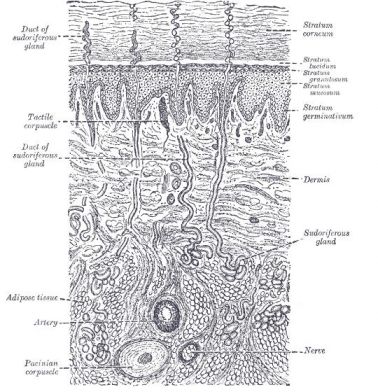In a study conducted in Finland, a small area of skin on the arm of ten volunteers was exposed to radiation for one hour, after which their DNA was tested.

A new study completed by the Finnish Radiation and Nuclear Safety Authority (STUK) regarding the effects of mobile phone radiation on human skin reinforced the results of an examination of human cell cultures: living tissues are affected by mobile phone radiation. Earlier studies showed that mobile phone radiation (radiofrequency modulated electromagnetic fields; RF-EMF) changes protein expression and activity in human endothelial cell cultures.
The new study is globally unique, because for the first time it examined whether local exposure of human skin to such radiation would cause changes in protein expression in living people. In the study, a small area of skin on the arm of ten volunteers was exposed to radiation for one hour. Then skin biopsies were collected from areas that were exposed to radiation and from areas that were not exposed to radiation and all the proteins extracted from them were tested. The examination of 580 proteins identified 8 proteins that were statistically significantly affected. "Radiation from a mobile phone has a certain biological effect. Even if the changes are small, they still exist," says the lead researcher.
According to the researcher, it is too early to say whether these changes caused by mobile phone radiation have any effect on health. "The goal of this study was not the discovery of possible health effects, but to find out if the human skin of a living person is affected by mobile phone radiation and if the proteomics approach is useful to clarify this issue," he notes. A more comprehensive study with 50-100 volunteers is now planned at the aforementioned research institute and is scheduled to begin in 2009.
to the press release of the study editors

7 תגובות
Why kill a person with focused microwave (cell phone) radiation when you can do it with high frequency UV radiation?
Why strain?
UV radiation and above is radiation that changes the DNA and damages it as well as damages it.
Microwave radiation at a certain frequency simply causes rapid vibrations of the water molecule and heating as a result.
A cell phone works on microwave radiation.
That's why you feel that your ear is warm after you talk on the cell phone.
It's like putting a thresh in a very weak microwave for a long time.
Are the 8 affected proteins specific, or random? Are there proteins that are more sensitive to radiation and there are some that are less? It makes sense that it is, and if indeed so, which proteins are affected, what is their role, and is it possible to kill a person using targeted cell phone radiation?
someone:
I think it's too early to worry.
The fact that there is an effect on the expressions of some proteins still does not mean that it is a harmful effect. The article also clearly states this.
Although there is technology that allows wireless talk without radiation, but it only works in very short ranges. I'm talking, of course, about technology that has been known to man since the day he started talking. Its range depends on the volume of the voice
It's worrying but what can be done about it? Is there a technology that allows wireless talk without radiation or with low radiation that is not significant?
point:
I don't know what can be concluded from the research, but your comment seems a bit strange to me.
You can be killed by the paralysis of the heart which is only one of the ramah of your organs and the shasha of your tendons and other components of your body that are not bones or tendons.
Valencia:
If the finding was obtained in all ten, it has a great statistical significance.
For example - if the chance of an effect in the general autoclave is half (and half is already a high chance that must be taken into account) then the chance that the phenomenon will be discovered in all ten people is less than one in a thousand. If the chance of an effect is a quarter (which is a high chance if you think of it as a risk) then the chance of the finding being discovered in ten people is less than one in a million.
What is missing, of course, is the answer to the question "Was the finding discovered in all ten or only in a small partial group of them?" But I assume that if they wrote that for 8 proteins a statistically significant change was detected, this is a sign that they looked into the matter and took the size of the population into account.
What is the statistical significance of ten volunteers?
8 out of 600 in an hour's exposure.